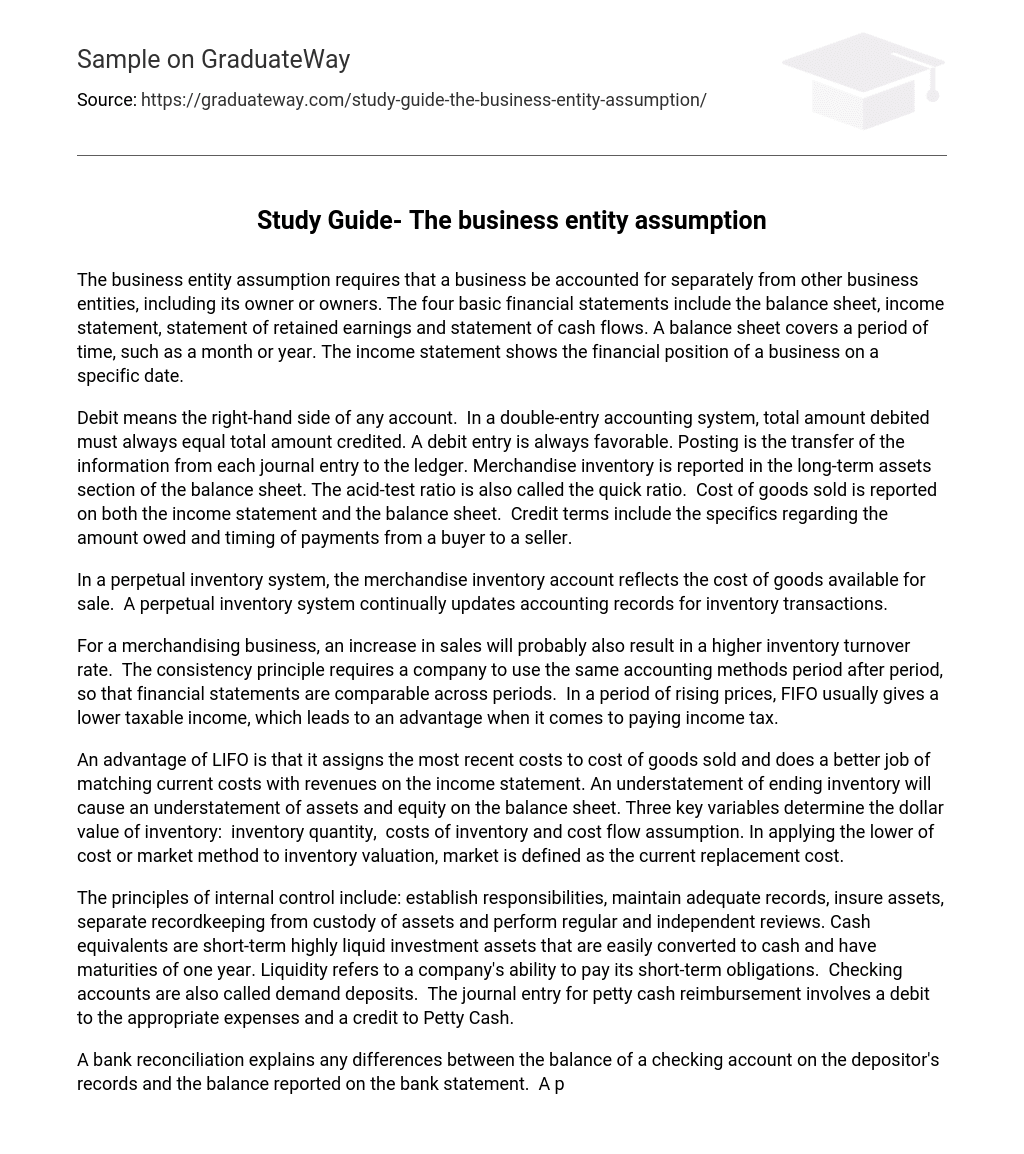The business entity assumption requires that a business be accounted for separately from other business entities, including its owner or owners. The four basic financial statements include the balance sheet, income statement, statement of retained earnings and statement of cash flows. A balance sheet covers a period of time, such as a month or year. The income statement shows the financial position of a business on a specific date.
Debit means the right-hand side of any account. In a double-entry accounting system, total amount debited must always equal total amount credited. A debit entry is always favorable. Posting is the transfer of the information from each journal entry to the ledger. Merchandise inventory is reported in the long-term assets section of the balance sheet. The acid-test ratio is also called the quick ratio. Cost of goods sold is reported on both the income statement and the balance sheet. Credit terms include the specifics regarding the amount owed and timing of payments from a buyer to a seller.
In a perpetual inventory system, the merchandise inventory account reflects the cost of goods available for sale. A perpetual inventory system continually updates accounting records for inventory transactions.
For a merchandising business, an increase in sales will probably also result in a higher inventory turnover rate. The consistency principle requires a company to use the same accounting methods period after period, so that financial statements are comparable across periods. In a period of rising prices, FIFO usually gives a lower taxable income, which leads to an advantage when it comes to paying income tax.
An advantage of LIFO is that it assigns the most recent costs to cost of goods sold and does a better job of matching current costs with revenues on the income statement. An understatement of ending inventory will cause an understatement of assets and equity on the balance sheet. Three key variables determine the dollar value of inventory: inventory quantity, costs of inventory and cost flow assumption. In applying the lower of cost or market method to inventory valuation, market is defined as the current replacement cost.
The principles of internal control include: establish responsibilities, maintain adequate records, insure assets, separate recordkeeping from custody of assets and perform regular and independent reviews. Cash equivalents are short-term highly liquid investment assets that are easily converted to cash and have maturities of one year. Liquidity refers to a company’s ability to pay its short-term obligations. Checking accounts are also called demand deposits. The journal entry for petty cash reimbursement involves a debit to the appropriate expenses and a credit to Petty Cash.
A bank reconciliation explains any differences between the balance of a checking account on the depositor’s records and the balance reported on the bank statement. A promissory note is a written promise to pay a specified amount of money either on demand or at a definite future date. The direct write-off method of accounting for bad debts records the loss from an uncollectible account receivable when the company determines it to be uncollectible. The matching principle requires use of the direct write-off method of accounting for bad debts. The advantage of the allowance method of accounting for uncollectible accounts is that it identifies the specific customers who do not pay their bills.
The accounts receivable method to estimate bad debts obtains the estimated balance in the Allowance for Doubtful Accounts in one of two ways: the percent uncollectible from the total accounts receivable or aging accounts receivable. The aging method of determining bad debts expense is based on the knowledge that the longer a receivable is past due, the lower the likelihood of collection.





